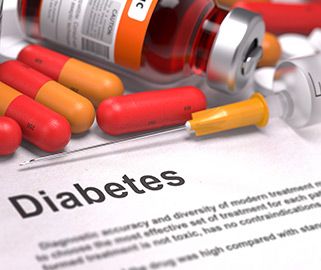According to Prof Tim Noakes, the Western Cape has the highest death rate of diabetes in South Africa. Lack of access to insulin, poor diabetic education and incorrect diet are all factors in this deadly statistic.
What is diabetes?
Diabetes is a disease that occurs when the body is unable to produce insulin, or, if it does produce insulin, it is unable to use it properly. Insulin is one of the main hormones that regulates blood sugar levels and allows the body to use sugar (or glucose) for energy. When insulin doesn’t function correctly, glucose accumulates in the blood instead of being used by the cells.
There are three types of diabetes:

Type 1 diabetes (T1DM) usually occurs in children and people under 20 years of age. Due to viral damage to the insulin-secreting cells of the pancreas, their bodies can’t produce insulin and they need to use insulin injections to control their blood sugar.
Type 2 diabetes (T2DM) is mainly caused by Insulin resistance (when the body can’t metabolise carbs normally oruse insulin effectively). Insulin resistance (IR) occurs due to a genetic predisposition as well as lifestyle factors, including lack of exercise and a poor diet high in carbs, which results in weight gain and obesity (a person with IR has to store any excess carbs as fat, thus the condition gets worse with age, as long as a high carb diet is eaten).
In 1927 the earth’s population was 2 billion. In less than 100 years, the population of obese and overweight people has risen to 2.1 billion.
People with severe IR will develop obesity and T2DM at a younger age than those with mild IR.
“The single most important condition we need to treat is insulin resistance.” Prof Tim Noakes

Type 3 diabetes is a relatively new discovery. It has been found that Alzheimer’s disease is in fact a form of diabetes that involves only the brain and has similarities to both type 1 and type 2 diabetes.
The brain requires glucose to function and uses about 25% of the body’s glucose supply. If the body cannot use insulin effectively, the brain also suffers. Therefore, you can develop insulin resistance in the brain as well as the muscles, liver and fat cells.
A recent study found that elevated blood glucose was a predictor for risk of dementia in those with T2DM and those without.
Symptoms of diabetes include:
– increased thirst
– increased hunger (especially after eating)
– dry mouth
– frequent urination
– unexplained weight loss
– excessive weight gain
– feeling weak and tired
– blurred vision
– slow healing cuts or sores
– numbness or tingling in hands and feet
– headaches
– itching of the skin
– impotency
Disorders associated with diabetes:
– obesity
– high blood pressure
– high blood cholesterol concentrations
– arterial damage
– heart disease
– greater risk for development of cancer and Alzheimer’s disease
– blindness
– amputations, especially of the feet and legs
– chronic kidney failure
How to test for diabetes:
The FPG test is a blood test that determines the amount of glucose (sugar) in the blood after an overnight fast (not eating for at least 8 hours). Normal fasting blood glucose, or blood sugar, is between 70 and 100 milligrams per deciliter or mg/dL. A fasting blood glucose level between 100 and 125 mg/dL means a person has pre-diabetes. A fasting blood glucose level of 126 mg/dL or higher means a person has diabetes.
The standard diagnosis of diabetes is made when two separate blood tests show that the fasting blood glucose level is greater than or equal to 126 mg/dL.
If the fasting blood sugar results come back normal, but the individual has a family history of diabetes or is showing symptoms, a glucose tolerance test could be done.
The HbA1c test can also be used as a test to diagnose diabetes. An HbA1c value of 48 mmol/mol (6.5%) or above is recommended as the blood level for diagnosing diabetes.
HbA1c refers to glycated haemoglobin (A1c), which identifies average plasma glucose concentration.
When the body processes sugar, glucose in the bloodstream naturally attaches to haemoglobin.
The amount of glucose that combines with this protein is directly proportional to the total amount of sugar that is in your system at that time.
Because red blood cells in the human body survive for 8-12 weeks before renewal, measuring glycated haemoglobin (or HbA1c) can be used to reflect average blood glucoselevels over that duration, which provides a useful longer-term gauge of blood glucose control.
Preventative measures:
– manage stress
– exercise may increase insulin sensitivity and it also helps the body to recover from the stress response
– maximise gut health
– eat a Banting diet free from grains, sugars and processed foods
A diet suitable for Diabetics:
– a Banting diet low in carbs, 25 grams or below per day, for type 2 diabetics
– type 1 diabetics need about 30g – 80g of carbs per day, due to their need for insulin injections
– a ketogenic diet (below 25 grams) may reverse insulin resistance in the brain and bring the system back to normal
“Carbs drive up your blood glucose concentration. Insulin brings your blood glucose concentration down. I can give you insulin, or you can cut your carb intake.” A colleague of Prof Noakes to his patients with type 2 diabetes.
Diabetes is predicted to be the 7th leading cause of death in 2030, our aim is to help the world lose weight by Banting so that we can reverse this terrible epidemic. Start your weight loss journey today by joining our online program.


